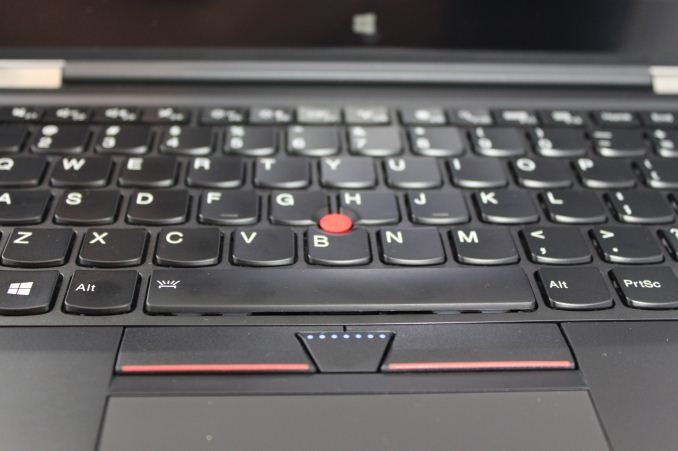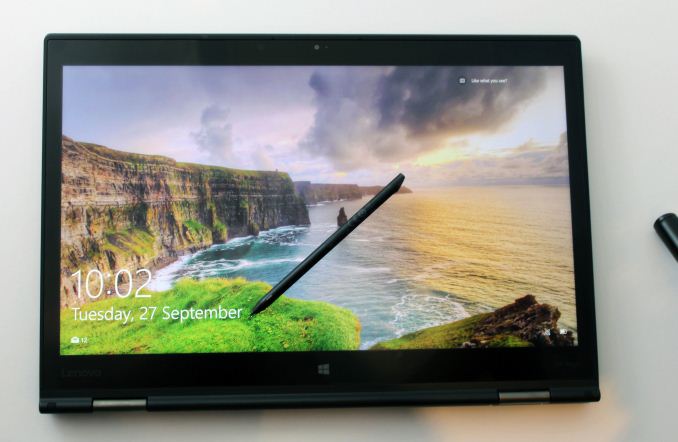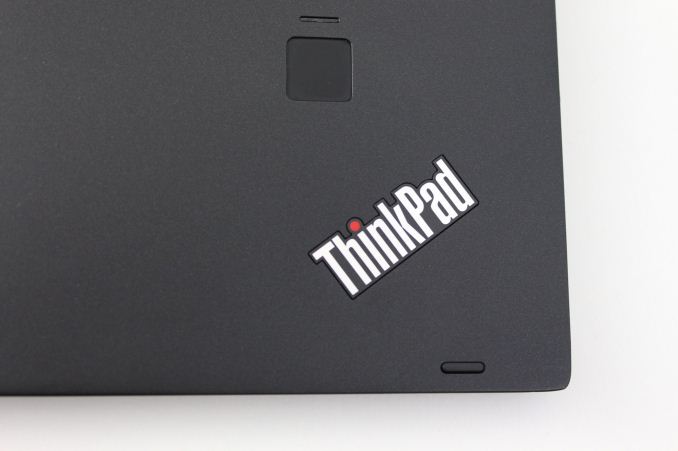The Lenovo ThinkPad X1 Yoga Review: OLED and LCD Tested
by Brett Howse & Brandon Chester on September 29, 2016 11:30 AM ESTFinal Words
Wrapping up, there’s quite a bit to go over with the ThinkPad X1 Yoga. Lenovo has done a great job continuing to make the X1 series thinner and lighter, and while some may question where that ends, anyone who needs a very portable laptop will appreciate this. Speaking of portability, Lenovo is one of the few brands to offer LTE connectivity in their ThinkPad lineup, further increasing the mobility of this notebook.
The X1 Yoga does a great job branching out from the X1 Carbon, which is itself an Ultrabook with positive characteristics. But the Yoga further builds on the Carbon by morphing that basic design into a thin and light two-in-one notebook using the Yoga hinge. For those looking for a notebook first, with some extra capabilities of being a touch device or tablet, the Yoga style devices from our experience win hands down over detachable convertibles. Compared to detachables, the Yoga devices have a much better weight distribution when used as a laptop, and Lenovo has included the ability to lock the keyboard when rotated, making it much better to hold and use in any of the non-laptop modes.
For performance, the battery life is reasonable by 2016 standards. One might suggest that with a premium line, a jump in platform efficiency would be a good aspect for the brand to move it into the higher echelons. Lenovo have been middle of the road against the competition in overall efficiency for some time - for some of the notebooks with large batteries this isn’t an issue, but on a size constrained notebook like the X1 Yoga, the effects are felt more quickly. The 52 Wh battery is a decent size for this size of notebook, but it isn't best-in-class.
We were lucky enough to be sampled both the LCD and OLED models to test. Lenovo is one of the first out of the gate with an OLED notebook, with a number of OLED designs on the market focusing on tablets, smartphones and VR. OLED technology has advantages that can really bring a wow factor to this market. The amazing contrast ratios of OLED easily outclass any LCD. While the OLED was advertised as highly accurate with specific options available, and it was much better than the LCD model, it still was not as good as some of the better notebooks we've seen over the past year or suited for professional use without user calibration tools. The color management software is comprehensive, so with some calibration the OLED on a per-unit basis from the factory would likely put the product ahead of the field in color accuracy.
It's hard to argue with the ThinkPad look, since it is so well known and Thinkpad customers demand it. Branding is difficult, and although some may find the ThinkPad lineup to be a bit low key, the matte black finish and design makes the laptop recognizable as a ThinkPad. Being a ThinkPad, it should be more durable than consumer notebooks, with a magnesium alloy chassis and military spec testing done to ensure it operates where many other laptops may struggle. For instance, the X1 Yoga, despite being convertible and despite having a lift and lock keyboard, still offers the spill-resistant keyboard. The polycarbonate exterior is pretty strong, especially where it is reinforced with carbon fibre, and there is a lot of durability there.
While the X1 Yoga keyboard can’t match some of the other thicker and heavier models like the T460s in key travel, it still has a great feel. The trackpad works well, and features a glass surface so it’s nice and smooth, which Lenovo combines with TrackPoint for those that use it.
Overall, the X1 Yoga is a good convertible. Lenovo has managed to make it thinner and lighter than the original X1 Carbon, yet still offer the versatility of the Yoga hinge. It's a solid offering from Lenovo. If thin, light, convertible, and business-class are all things you need, the X1 Yoga should be considered.













84 Comments
View All Comments
yomamafor1 - Friday, September 30, 2016 - link
I mean, it's not like Lenovo did make a P40 specifically for this purpose.....LordOfTheBoired - Saturday, October 1, 2016 - link
Touche. Just saying... ddriver isn't exactly what I'd call the most qualified person to make that call.Ej24 - Thursday, September 29, 2016 - link
Lenovo never puts iris graphics in anything. It drives me nuts. Been waiting for years for an ultrabook from them with iris graphics. Dell xps 13 finally has a 15w cpu with iris, and some Asus ultrabooks have 28w cpus with iris.Ro_Ja - Thursday, September 29, 2016 - link
They should've atleast put in a Skylake processor with HD 540 in it.arsjum - Thursday, September 29, 2016 - link
The second revision of Yoga 900 as well as IdeaPad 710s are both equipped with Skylake Iris graphics.spikebike - Friday, September 30, 2016 - link
Try the Lenovo Ideapad 721s, has the iris graphics. Sadly the disabled the AHCI interface and require some whacky "RAID" mode which is really just saying "Hey, windows, use your software raid driver". The XPS 13 does have the iris as well, but sadly it's tied to the 3200x1800 touchscreen which is shiny and halves your battery life.ajp_anton - Friday, September 30, 2016 - link
I have the 1080p non-touch version of the XPS 13, with Iris 540 graphics.Pissedoffyouth - Thursday, September 29, 2016 - link
What possibly could you be doing on an ultrabook that you need Iris graphics? I'd rather have a CPU-heavy focused TDP that shitty CPU and a bit GPUCliff34 - Thursday, September 29, 2016 - link
The only CPU with Iris GPU are HQ processors. HQ processor always perform better than U processor. For me, the two possible reasons why they don't use HQ processors are either they want a CPU that doesn't generate too much heat and/or force consumers to buy a laptop with its own discrete graphic card (and spend more money).arsjum - Thursday, September 29, 2016 - link
Not true at all. U-series CPUs can come with HD 540 and HD 550 Iris graphics.